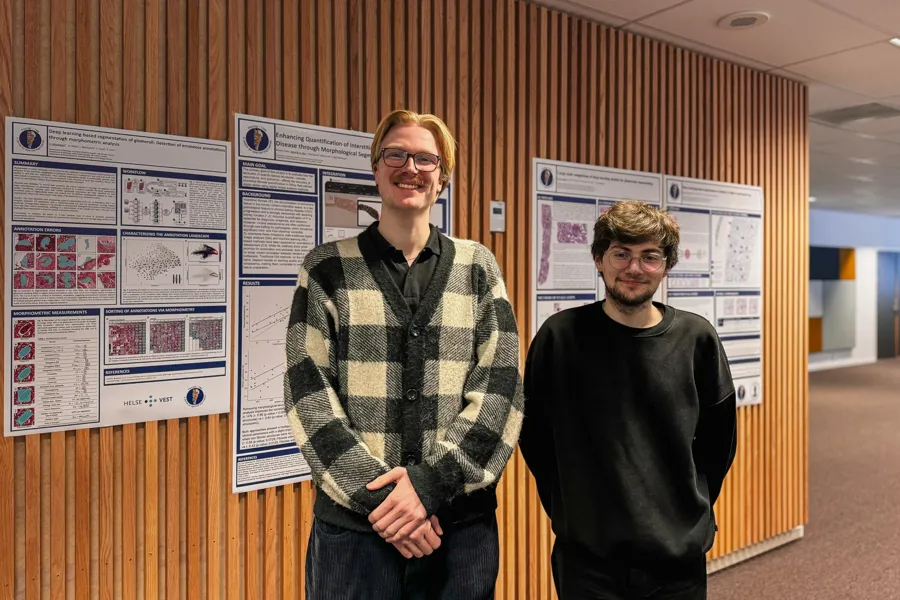MedTech Interns Hevar and Vegard Working on a Quality Control (QC) Tool for HE- Stains
Meet our new MedTech students, Hevar and Vegard, who are joining PiV for their internship this spring.

Hello, World! Our names are Hevar and Vegard, and we are currently in our second year of the engineering degree in Medical Technology at the University of Bergen (UiB). We have both chosen chemistry as our area of expertise within our studies and are honoured to have received an internship for the subject MTEK200 here at PiV (Patologi i Vest) this spring.
The essence of the work here at PiV is to develop AI tools for pathology diagnostics and optimize pathology workflows. As part of our internship, we will build upon the work of Borghild, a MTEK student who also had her internship here at PiV. During her time here, she began the work of extracting information from kidney histology slides. Her goal was to develop a QC (Quality Control) system to assess and ensure the consistency of the Hematoxylin-Eosin (HE) stain on kidney histology slides.
Kidney biopsies are sent to the laboratory for processing and staining, allowing pathologists to visually examine the histology slides to diagnose non-neoplastic kidney diseases. There are several ways to stain histology slides, but one of the most common staining methods is the HE stains. In short, hematoxylin stains the nuclei blue, eosin stains the cytoplasm and extracellular structures red, and most importantly, highlights necrotic areas in bright red. Poor quality staining can introduce artifacts, making structures difficult to assess, so developing a QC tool ensures that the staining is consistent and diagnostically reliable.
Borghild has done valuable work, providing a strong foundation for us to build upon. By retrieving a much larger dataset than what she worked with, we hope to extract enough meaningful information to evaluate how new slides compare to earlier slides, or detect gradual, day-to-day shifts in stain appearance. These gradual changes in appearance are something that a medical laboratory scientist might not detect, but a program may. A key objective is to detect outliers with this tool, allowing us to differentiate between high- and low-quality stains more efficiently or even automatically.

This project poses several challenges, a main one is having no target variable for the exploratory data-analysis. We will try to solve this by comparing slides to each other instead of the more intuitive approach of ranking some slides better than others. Working alongside a great team with very bright, understanding (and funny) minds, we hope to be able to establish this QC before our time here ends. Regardless, this will be a wonderful learning experience for us! :)